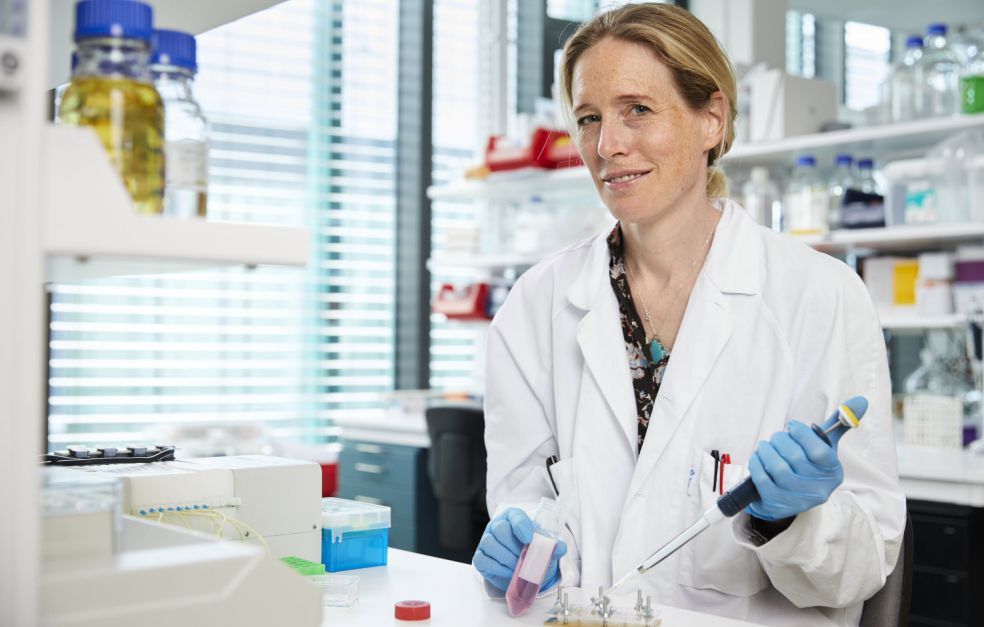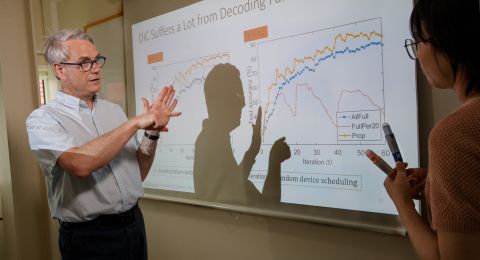Over the past ten years Anna Herland has developed miniature models of blood vessels and cells in the brain using conductive polymers. As a Wallenberg Academy Fellow, she is using these models to study congenital disorders that have a major impact on metabolism.
Anna Herland
Associate Professor, micro- and nanosystems
Wallenberg Academy Fellow, prolongation grant 2020
Institution:
KTH Royal Institute of Technology
Research field:
Micro- and nanosystems on microfluidic chips as a means of studying cell interaction
Since the mid-1960s a blood sample has been taken from all new-born infants in Sweden in order to identify treatable congenital diseases. At first the sole concern was the disease after which the test was named – phenylketonuria (PKU), also known as Fölling’s Disease. Nowadays the samples are screened for some 25 diseases, some of which are very rare indeed. Around 60–70 of the 100,000 children born each year in Sweden have one of these disorders.
Herland plans to develop new chip-based methods to study three of these diseases, all of which cause metabolic problems. Common to the conditions is that they lead to epilepsy, and that they can be treated with the help of a ketogenic diet. The diet resembles an extreme form of LCHF, but with such an extreme fat component that other serious health problems result.
Dream project
The idea for this research project was born after a meeting with Anna Wedell, who is Herland’s mentor under the Wallenberg Academy Fellow scheme.
“We quickly got good contact and realized that we complement one another – she as a clinician and I as a bioengineer. And then it struck me that the system I’ve developed is ideal for studying the diseases she is focusing on,” Herland explains.
Wedell, who is a Wallenberg Clinical Scholar, is developing new diagnostic methods for hereditary metabolic disorders.
“The result is a real dream project that dovetails with the research I’ve already done as a Wallenberg Academy Fellow,” Herland says.
She has developed a model of the brain’s blood vessels and neurons that enables students to study brain function in the laboratory environment. In practice, the model is a miniature flow system in the form of a polymer chip. On the chip are minute channels that can simulate how a flow of blood interacts with cells along them. Sensors are incorporated in the polymer so the signals from the cells can be measured.
The field is called “organs-on-a-chip”, and Herland has already used the system to study drugs that cross the blood-brain barrier, and also how hormone-disrupting chemicals can impact blood vessels in the brain.
Three selected disorders
The project begins by collecting tissue samples from children suffering from one of three selected congenital disorders. One of these causes problems with glucose transport, another causes difficulties in converting energy in the mitochondria, and the third gives rise to errors in communication in the brain’s support cells, known as glial cells.
The tissue samples are used to generate stem cells, which can then form both blood vessel cells and neurons in the model. All three disorders are currently treated with a ketogenic diet. By simulating that diet in the model system, Herland hopes to gain a better understanding of how it impacts the cells.
“We hope to see these disorders with the help of the electrical and electro-optical sensors in the system. If we can trace defective signaling, we may assume that the cells trigger epileptic attacks, which we can then treat,” Herland explains.
The project also includes development of new measurement methods to determine the energy balance in cells.
“The Wallenberg Academy Fellow grant enables me to pursue long-term independent research. It also gives access to a network that can impact and deepen your research – a fantastic opportunity.”
Although these disorders are very uncommon, the study will also provide useful knowledge in relation to similar, more common disorders.
“When we understand these conditions better, we’ll be able to move on to other kinds of epilepsy. Although there are now drugs that help most sufferers, a proportion of patients do not respond as well to treatment.”
Attempts are already under way to treat those patients using a dietary supplement that resembles the ketogenic diet. But as yet there is no generally accepted therapy.
Recreating conditions in the body
Herland received her PhD at Linköping University, where she was involved in developing new polymers able to react to different environmental factors. As a qualified bioengineer she developed methods to measure biological systems. This was soon followed by the idea of recreating a body-like environment in the form of a polymer chip.
“When I realized how dependent neurons in particular are on interaction with surrounding blood vessels, I also realized we had to include them too. So I worked for a time at the Wyss Institute in Boston to learn how to build blood vessels.”
In Boston she worked with Professor Donald Ingber, who is an organs-on-a-chip pioneer. She now heads her own research team at KTH Royal Institute of Technology, and is also affiliated to Karolinska Institutet.
“The field is still fairly new, but we’re going to see different ways of culturing and using cell models becoming increasingly important, not least in drug development.”
As a young girl, she dreamed of becoming a farmer, vet or possibly a wolf researcher. She was passionately interested in nature, and envisioned different ways of studying animal behavior.
“These days the lab is the place I spend my time learning about natural phenomena,” Herland says.
Text Magnus Trogen Pahlén
Translation Maxwell Arding
Photo Fredrik Persson






